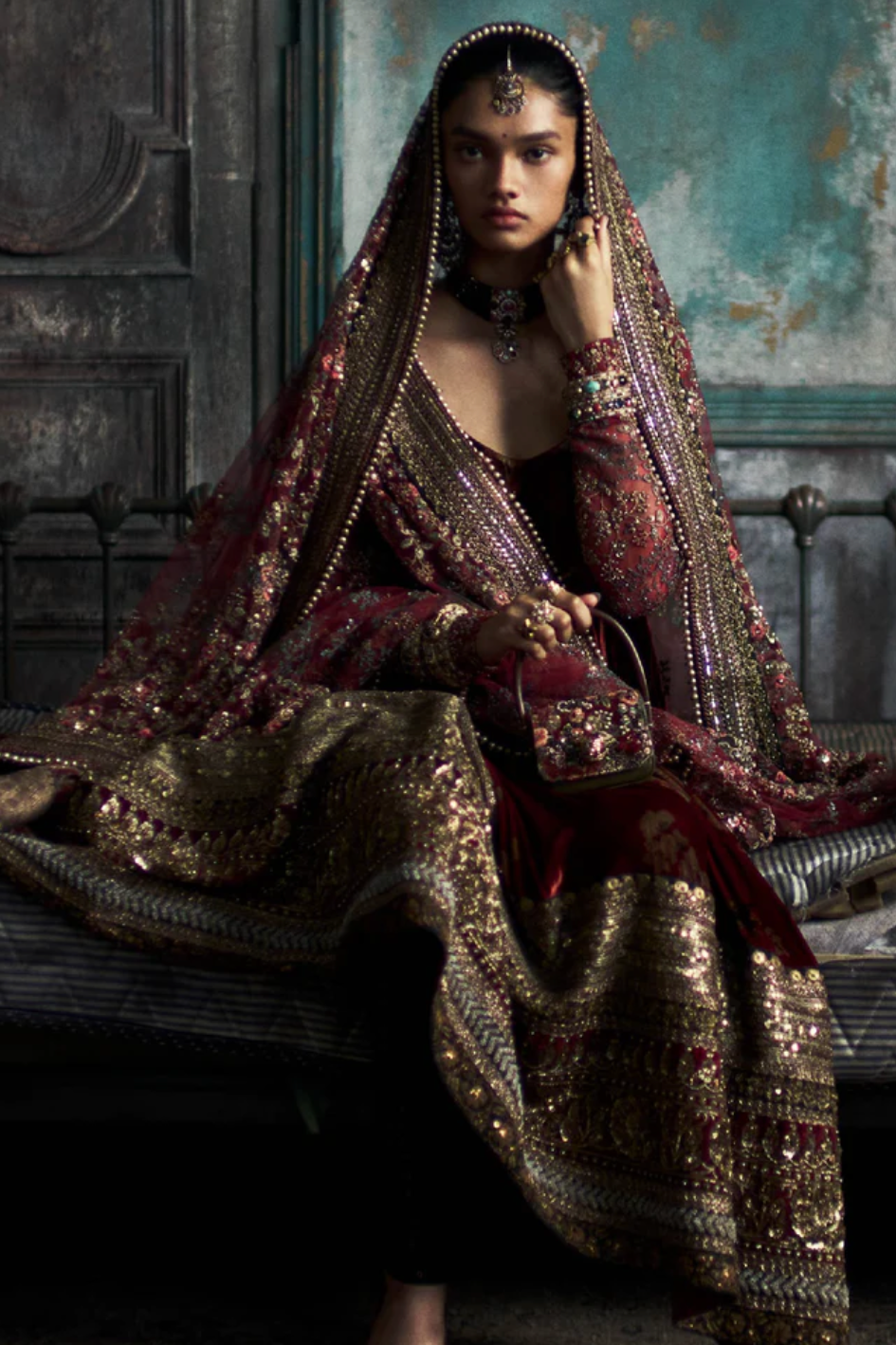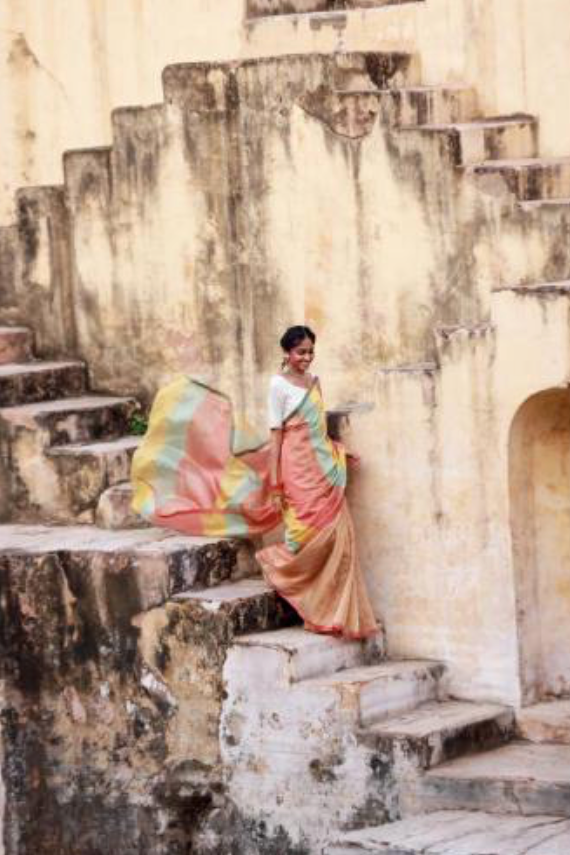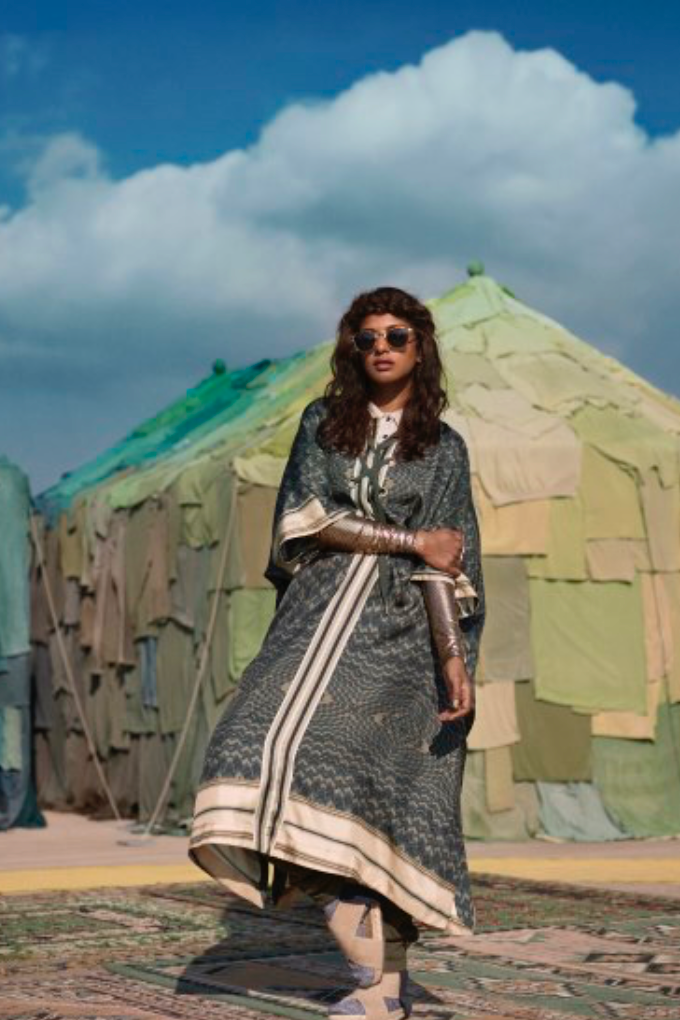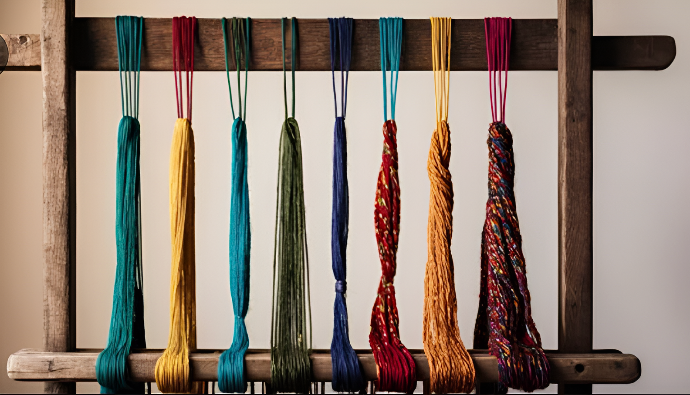In 2025, the line between high fashion and handcrafted heritage is blurring beautifully — thanks to powerful collaborations that celebrate India’s artisanal soul while responding to the global call for sustainability. These partnerships are more than just fashion statements — they’re setting a new benchmark for ethical design, innovation, and rural empowerment.

1. Sabyasachi x Craftmark: Heritage Reimagined
Luxury designer Sabyasachi Mukherjee, known for reviving Indian heirloom techniques, has partnered with Craftmark, an initiative by AIACA (All India Artisans and Craftworkers Welfare Association). This capsule collection celebrates hand block prints, dyed using natural pigments and printed on GOTS-certified organic fabrics like khadi cotton and mulmul.
- The designs draw inspiration from Mughal floral motifs and Bengal’s vintage textile archives.
- Each garment is tagged with artisan info, enhancing transparency and storytelling.
- The limited-edition pieces were showcased at Lakmé Fashion Week 2025, highlighting India’s textile legacy for a global audience.
“This isn’t nostalgia. This is cultural survival,” Sabyasachi said in a recent interview, emphasizing the role of luxury fashion in supporting endangered crafts.

2. Fabindia’s “Revive” Initiative: Artisan-Led Sustainability
Fabindia, one of India’s most trusted craft-based lifestyle brands, launched Revive in March 2025 — a collection co-created with rural clusters across Rajasthan, Odisha, and Tamil Nadu.
Key highlights:
- Focus on natural dyeing using pomegranate rind, turmeric, madder root, and indigo.
- Fabric choices include handloom blends of linen, banana fiber, and eri silk.
- Training modules were developed to help artisans work with low-impact dyes and achieve consistent results using traditional methods.
This collaboration is more than a collection — it’s a capacity-building model. Profits are partially reinvested in artisan welfare (education, medical support, and equipment).

3. H&M x Eastman Naia™ Renew: Circularity Goes Global
From a global lens, H&M’s Circular Collection launched earlier this year is gaining attention. Created in partnership with Eastman Naia™ Renew, a sustainably sourced cellulosic fiber made from 60% wood pulp and 40% recycled waste, this line is being marketed as a next-gen circular design experiment.
- Garments feature QR codes for full lifecycle traceability.
- The materials used are fully compostable or recyclable at the end of their life.
- The collection includes modern wardrobe staples — trench coats, shirt dresses, and oversized pantsuits in earthy tones and minimal tailoring.
This marks a serious step by a fast-fashion giant toward eco-forward transparency, addressing long-standing concerns around greenwashing.

Why These Collaborations Matter
These projects show that sustainability doesn’t have to come at the cost of aesthetics, scale, or profitability. Whether it’s a couture powerhouse like Sabyasachi or a mass-market brand like H&M, the common thread is innovation rooted in ethics.
They:
- Empower artisans through fair wages, skill training, and visibility.
- Promote circular economy models, reducing dependence on virgin materials.
- Help preserve India’s diverse textile heritage by adapting it to modern silhouettes and global tastes.

